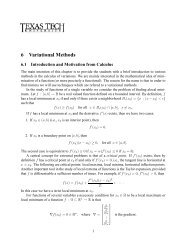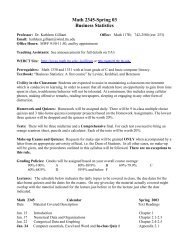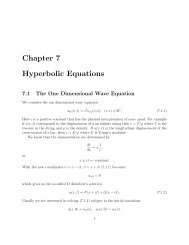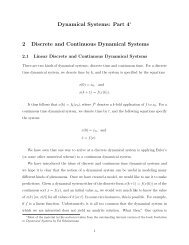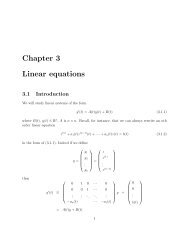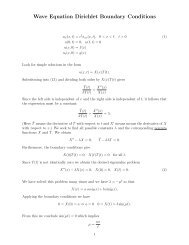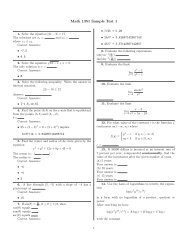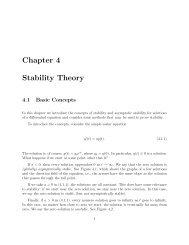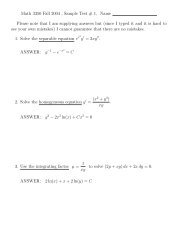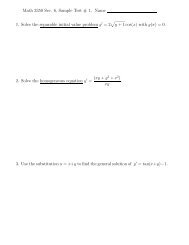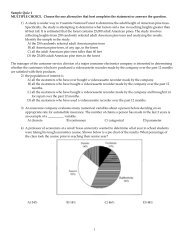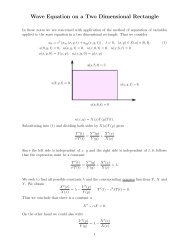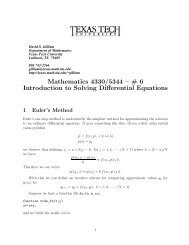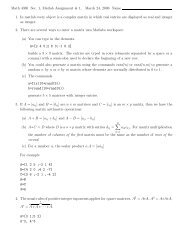Chapter 6 Partial Differential Equations
Chapter 6 Partial Differential Equations
Chapter 6 Partial Differential Equations
Create successful ePaper yourself
Turn your PDF publications into a flip-book with our unique Google optimized e-Paper software.
6.1. INTRODUCTION 5<br />
Solutions to Laplace’s equation ∆u(x) = 0 are said to be harmonic. Suppose f(z) =<br />
f(x + iy) =u(x, y)+iv(x, y) is analytic. The Cauchy-Riemann equations state that<br />
∂u<br />
∂x = ∂v<br />
∂y ,<br />
∂u<br />
∂y = −∂v ∂x<br />
and so<br />
u xx + u yy =0, v xx + v yy =0.<br />
Thus the real and imaginary parts of an analytic function are harmonic. There is a converse<br />
statement of this result known as Weyl’s Theorem that depends on the notion of a weak<br />
solution. Roughly stated, ∆u(x) = 0 in a weak sense if for all smooth functions φ with<br />
compact support in Ω, ∫<br />
u(x)(∆φ)(x) dx =0.<br />
We will not prove this next result.<br />
Ω<br />
Weyl’s Theorem If u is a weak solution of ∆u(x) = 0 on Ω, then u ∈ C ∞ (Ω) and u<br />
satisfies Laplace’s equation in a classical sense.<br />
The so-called Cauchy problem for Laplace’s equation,<br />
u xx + u yy =0, |x| < ∞,y >0<br />
u(x, 0) = f(x),<br />
u y (x, 0) = g(x),<br />
is not well-posed. Indeed, consider the specific problem<br />
u xx + u yy =0, |x| < ∞,y >0<br />
cos nx<br />
u(x, 0) =<br />
n<br />
u y (x, 0)=0<br />
with the solution<br />
u n (x, y) = 1 cosh(ny) cos(nx).<br />
n<br />
For n sufficiently large, the data of this problem can be made uniformly small. However,<br />
lim u n(x, y) =∞.<br />
n→∞<br />
In other words, small changes in the data do not correspond to small changes in a solution.



